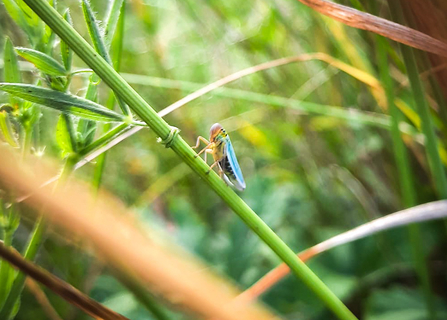
A green leafhopper (cicadella viridis) in an Oxfordshire meadow. Picture: Pete Hughes
(C) Mark Hamblin/2020VISION

A green leafhopper (cicadella viridis) in an Oxfordshire meadow. Picture: Pete Hughes
Among the smallest animals that can be appreciated with the naked eye are leafhoppers. These tiny insects are only a few milimetres long, but come in a huge variety of colours and patterns, from striking black-and-yellow stripes to luminous turquoise, emerald green and stunning scarlet. Lie down in any meadow for five minutes and, once your eyes adjust, you'll start seeing these miniature gymnasts leaping and bounding all around.
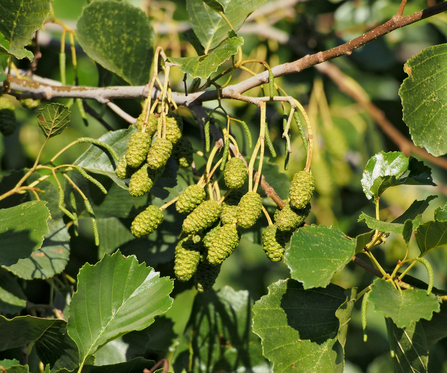
Male and female catkins on an alder tree. Picture: Luis Fernández García/ Wikimedia Commons
Alder trees are easy to recognise at this time of year as they are the only broad-leaved tree that has cones like a pine tree. Actually, these cones are the female catkins which contain the flowers. The male catkins, which are long and thin, are found on the same tree because the species is monoecious. Look for them along riverbanks where their roots provide habitats for a host of aquatic animals.
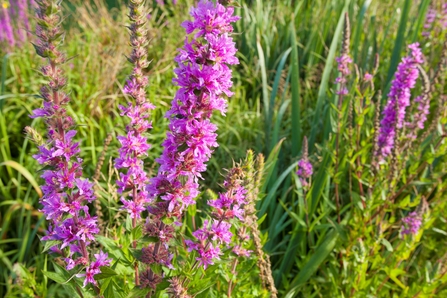
(C) Mark Hamblin/2020VISION
Another riverbank sighting – and found in other wet habitats such as reedbeds, fens and marshes - the purple loosestrife’s impressive spikes of magenta flowers rise up as a beacon of colour among the grasses. Its nectar is a valuable food source over the summer for long-tongued insects, such as brimstone butterflies, red-tailed bumblebees and elephant hawk-moths.
Having been in flower since June, this is the last month to see its impressive displays before its fading colours signal that autumn is at hand. Look for it along the pools and channels at Abingdon’s Dry Sandford Pit, or at Thatcham Reedbeds near Newbury.
Long-winged conehead bush cricket (https://www.youtube.com/watch?v=Q0DVcTKL6q8)
A long-winged conehead bush cricket stridulating. Nature Through My Eyes/ YouTube
With its angular head and dart-shaped body, the long-winged conehead is one of our most striking crickets - yet it still manages to disappear into the undergrowth with its perfect camouflage. The best way to find it is to listen out for its high-pitched stridulation, which sounds a bit like a water sprinkler on the fastest setting.
(C) Kieron Huston
This is one wildlife sighting that you might not see – or even hear. After a busy season of building nests and gathering enough food to satisfy a brood or two of hungry chicks, many birds are laying low.
This period of several weeks includes a moult to replace worn-out feathers, which takes place in stages so that the birds are never left entirely helpless. Even so, it’s still in their best interest to keep quiet and inconspicuous to predators while in a more vulnerable state. But don’t worry, it won’t be too long before the noise returns as birds stake out their autumn territories!
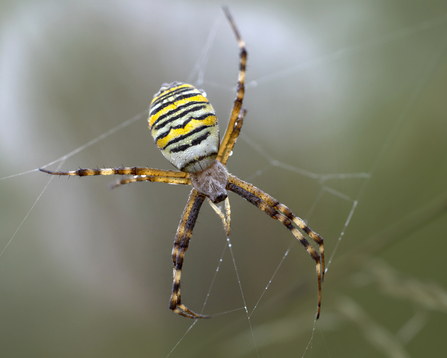
(C) Jon Hawkins - Surrey Hills Photography
One of the newest August highlights in our part of the world is the striking black-and-yellow wasp spider. This fairly large arachnid is actually a recent colonist from the continent, and was only recorded for the first time in the UK in the 1920s in Kent, but since then has steadily expanded its range. Look out for them sitting on their webs in long grass, and don't be alarmed - despite their waspish warning colours they don't pose any danger to humans.
Harvest mouse nest by Martha Cowell
The harvest mouse is tiny - an adult can weigh as little as a 2p piece! It prefers habitats with long grass, but you are most likely to spot its perfectly round woven-grass nests in which the female will give birth to as many as six young. Our Ecology Trainee Hayley Beck went surveying for these nests at Chimney Meadows over the winter – find out how it went!
Adonis blue butterfly. Photo by Colin Williams
Our sprawling chalk grassland reserve on the hillside at Yoesden near High Wycombe is a treasure trove of butterflies in August. In particular, it can be a fantastic place to spot three of our rarer blues on the same day - adonis, chalkhill and small. Please let us know what you spot!
Find out more about our brilliant blue butterflies and their surprising relationships with ants
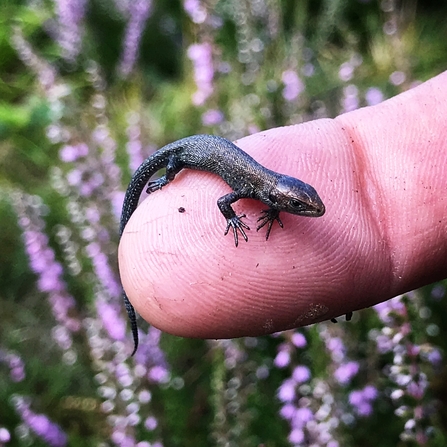
(C) Kevin Caster
Another highlight for August is baby lizards. Although less common across England than they once were, we have healthy populations of common lizards at several of our reserves including Snelsmore Common near Newbury where they can be spotted throughout the summer sunbathing in the heather. Juveniles are darker in colour than adults, often with an olive-green tint, and tend to hang around in small groups.
©Philip Precey
The broad-leaved helleborine is a tall, dark orchid with leaves that spiral around the stem and purple-tinged, drooping flowers. It flowers from July to September and can mostly be seen in woodlands and scrub. Some species of wasp and bee have been noted becoming 'intoxicated' after visiting these orchids for nectar - it appears that the flowers can contain a kind of alcohol as a result of a fungus! The bees like it so much, they come back for more, ensuring the flower is pollinated. Look out for it at our Aston Clinton Ragpits reserve near Aylesbury.